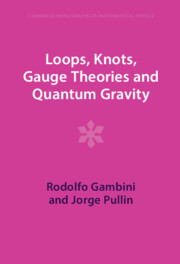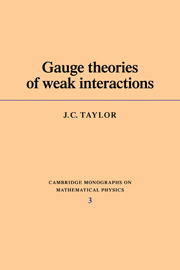Methods of Contemporary Gauge Theory
This book introduces the quantum theory of gauge fields, emphasising four non-perturbative methods which have important applications: path integrals, lattice gauge theories, the 1/N expansion, and reduced matrix models. Written as a textbook, it assumes a knowledge of quantum mechanics and elements of perturbation theory, while many relevant concepts are introduced at a basic level in the first half of the book. The second half comprehensively covers large-N Yang–Mills theory. The book uses an approach to gauge theories based on path-dependent phase factors known as Wilson loops, and contains problems with detailed solutions to aid understanding. Suitable for advanced graduate courses in quantum field theory, the book will also be of interest to researchers in high energy theory and condensed matter physics as a survey of recent developments in gauge theory. Originally published in 2002, this title has been reissued as an Open Access publication on Cambridge Core.
- Introduces gauge theories in a pedagogical way
- Written in a clear and accessible style
- Ideal as a textbook for advanced graduate courses on quantum field theory
- Reissued as an Open Access title on Cambridge Core
Product details
July 2023Hardback
9781009402057
430 pages
250 × 175 × 28 mm
0.91kg
Not yet published - available from February 2025
Table of Contents
- Preface
- Part I. Path Integrals:
- 1. Operator calculus
- 2. Second quantization
- 3. Quantum anomalies from path integral
- 4. Instantons in quantum mechanics
- Part II. Lattice Gauge Theories:
- 5. Observables in gauge theories
- 6. Gauge fields on a lattice
- 7. Lattice methods
- 8. Fermions on a lattice
- 9. Finite temperatures
- Part III. 1/N Expansion:
- 10. O(N) vector models
- 11. Multicolor QCD
- 12. QCD in loop space
- 13. Matrix models
- Part IV. Reduced Models:
- 14. Eguchi–Kawai model
- 15. Twisted reduced models
- 16. Non-commutative gauge theories.







